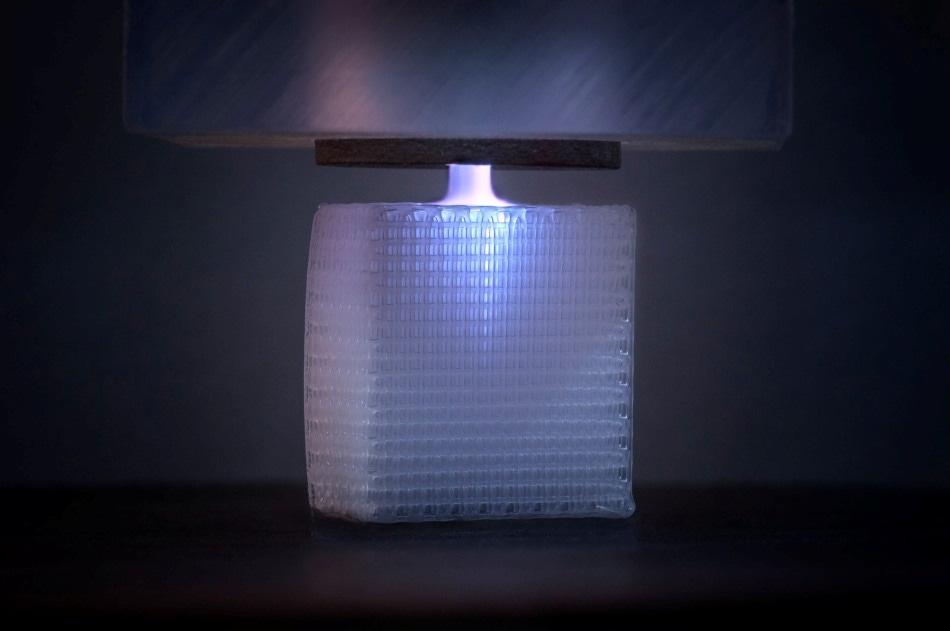Dec 4 2018
In the event of bad fractures, cancerous tumors, or infections, it might be essential to surgically remove bones and insert implants in their place. At present, Fraunhofer researchers, together with their European collaborators, have developed a technique that enables 3D printing of bone implants that are precisely fitting, stable, and variable in dimensions from a special plastic.
 Plasma-jet coating of medical implant scaffolds. (Image credit: Fraunhofer IST, Falko Oldenburg)
Plasma-jet coating of medical implant scaffolds. (Image credit: Fraunhofer IST, Falko Oldenburg)
The secret recipe is the printing process, which involves treating the individual layers with a cold plasma to enhance the bonding of bone-forming cells. While traditional surface treatments that use low-pressure or atmospheric pressure techniques gain restricted penetration into the interior of bone implants, the new technique allows the application of a cell-growth-promoting coating also to the interior of the implants.
For this purpose, a plasma jet was used by the research team from the Fraunhofer Institute for Surface Engineering and Thin Films IST. A cold jet of plasma consisting of reactive groups is directly blown onto the printed layers by the device. The amino groups bond with the surface and make sure that bone cells find a suitable substrate to which they readily adhere. A distinctive feature of the method is that the 3D printing and coating processes are closely associated and are combined in one device. Since the coating does not require any chemical pretreatment with solvents, it is cost-effective as well as environment-friendly.
The scaffold around which the implant is built is composed of a unique copolymer that is modeled on the natural bone. The 3D printing method allows very individual, precisely fitting design and stability.
Our goal is for the bone cells to grow into the synthetic structure as quickly as possible and finally replacing the implant which is broken down gradually by the body’s own enzymes.
Dr Jochen Borris, Head, Life Science and Ecology business unit, Fraunhofer IST.
Variable thanks to sophisticated fillers
It is possible to control the mechanical stability of the implant through both the density of the printed scaffold structure and the special fillers added to the copolymer: the stability is directly proportional to the filler concentration.
This development by our project partners from Maastricht University makes it possible to individually vary the stability inside the implant. Like natural bones, implants can now have areas with different strengths.
Dr Thomas Neubert, EU Project Manager, Fraunhofer IST.
Furthermore, active drug ingredients such as antibiotics can be included in the filler to minimize the risk of infection.
The project team has successfully executed the project steps so far; now it intends to alter the technique and bring it to application maturity. Currently, the experimental set-up is still on a laboratory scale.
We’re currently working on simplifying the process and making it more stable. To be able to further pursue development and carry out clinical studies, we’re on the search for industrial partners.
Dr Jochen Borris, Head, Life Science and Ecology business unit, Fraunhofer IST.
The novel method exhibits immense potential for adapting bone implants very precisely to the patients’ individual requirements. “With our method, we’re able to control the shape, porosity, mechanical stability and biomechanical characteristics well and vary them within the implants. This means that we can produce areas with different strengths or porosities, which can also be coated with various functional groups.” Someday, doctors could be able to devise the requirements for each patient on the basis of scanned images and send the data to medical print shops, where the precisely fitting implants would then be printed.